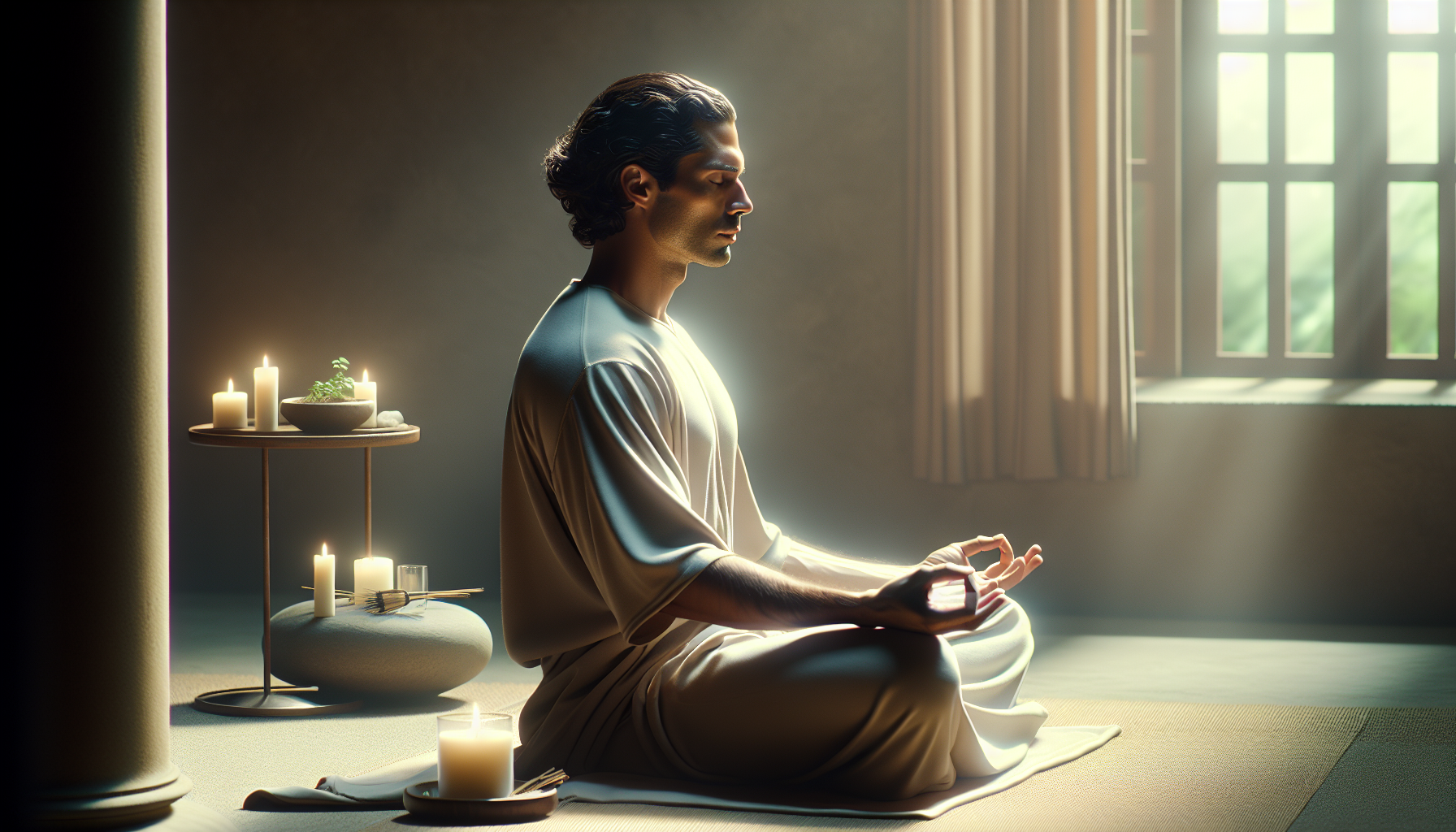In the hustle and bustle of our modern world, where distractions are just a notification away and stress levels often soar, achieving mental clarity can feel like a distant dream. We find ourselves juggling countless tasks, bombarded by information from all directions, and struggling to keep our thoughts organized. It’s no wonder that many of us are on a perpetual quest for that elusive state of sharp, focused thinking. But what if the key to unlocking your mental clarity was not found in yet another productivity app or mindfulness routine, but rather in something as simple—and invigorating—as cold exposure? ❄️
Cold exposure, often associated with invigorating morning swims or bracing cold showers, has been a practice embraced by various cultures for centuries. However, it’s only recently that science has begun to catch up, revealing a host of cognitive benefits that could transform the way we approach our mental wellbeing. This article dives into the fascinating world of cold exposure, exploring how brief encounters with the cold can help sharpen your mind, enhance concentration, and even boost your creativity. We’ll unravel the science behind this chilly practice and provide practical tips on how you can incorporate it into your daily routine for maximum mental gains.
Throughout this article, we will first explore the physiological response of the body to cold exposure, highlighting how this seemingly harsh practice can trigger a cascade of beneficial effects on the brain. We’ll delve into the release of neurotransmitters and the increased blood flow that cold exposure prompts, both of which play crucial roles in enhancing cognitive function. Next, we’ll examine the role of cold exposure in reducing stress and anxiety, two common mental fog culprits, and how this reduction can lead to clearer, more focused thinking. Finally, we will share inspiring real-life stories of individuals who have transformed their mental capabilities through regular cold exposure, providing you with the motivation and insight to try it for yourself.
So, whether you’re a seasoned biohacker or someone just beginning to explore new avenues for personal growth, this article will provide you with a comprehensive guide to harnessing the power of cold exposure for a sharper mind. By the end, you’ll have a deeper understanding of how this invigorating practice can serve as a powerful tool in your mental clarity arsenal, helping you navigate the demands of everyday life with renewed focus and vitality. Let’s embark on this journey together, and discover the chilling yet thrilling potential that lies in unlocking your mental clarity through cold exposure. 🧠✨
Understanding Cold Exposure
Cold exposure, often associated with activities like ice baths, cold showers, or cryotherapy, has emerged as a popular practice for enhancing mental clarity and overall well-being. By engaging with the cold, individuals not only experience physical benefits but also significant mental and psychological advantages. This practice has deep roots, with historical instances of cold exposure used for health benefits, dating back to ancient times. Whether it’s the invigorating shock of a cold shower in the morning or the deliberate immersion in an ice bath, the impact of cold on mental acuity is profound.
One of the primary mechanisms by which cold exposure enhances mental clarity is through the stimulation of the sympathetic nervous system. When the body is exposed to cold, it triggers a cascade of physiological responses, including the release of norepinephrine, a neurotransmitter that plays a crucial role in focus, attention, and mood regulation. The increase in norepinephrine can lead to heightened alertness and improved concentration, making it easier to tackle cognitive tasks with precision and efficiency.
Additionally, cold exposure promotes the production of endorphins, the body’s natural painkillers, and mood enhancers. This boost in endorphin levels can lead to an elevated mood, reduced stress, and a greater sense of mental well-being. By incorporating cold exposure into a regular routine, individuals may find themselves feeling more energized, motivated, and mentally sharp, ready to tackle the challenges of the day with a clear and focused mind.
Benefits of Cold Exposure for Mental Clarity
The benefits of cold exposure extend far beyond the immediate physiological responses. By consistently engaging in cold exposure practices, individuals can cultivate long-term improvements in mental clarity and cognitive performance. Regular exposure to cold can lead to increased resilience to stress, as the body becomes better equipped to handle the initial shock and discomfort. This resilience can translate into greater mental fortitude, enabling individuals to remain calm and focused under pressure.
Another significant benefit of cold exposure is its potential to enhance neuroplasticity, the brain’s ability to adapt and reorganize itself. By challenging the body and mind through cold exposure, individuals may promote the growth of new neural connections, supporting improved cognitive function and mental agility. This adaptability can lead to enhanced problem-solving skills, creativity, and the ability to think critically in various situations.
Moreover, cold exposure has been linked to improved sleep quality, which plays a crucial role in maintaining optimal cognitive function. By promoting relaxation and reducing stress levels, cold exposure can help individuals achieve deeper, more restorative sleep, allowing the brain to recharge and prepare for the demands of the day ahead. With better sleep, individuals can experience enhanced memory retention, sharper focus, and increased mental clarity throughout the day.
Comparing Cold Exposure Methods
| Method | Description | Benefits | Drawbacks |
|---|---|---|---|
| Cold Showers | Brief exposure to cold water during a shower. | Easy to incorporate into daily routine, boosts alertness. | Less intense compared to other methods, short duration. |
| Ice Baths | Immersion in a tub filled with ice and water. | Intense cold exposure, enhances recovery. | Requires preparation and time, can be uncomfortable. |
| Cryotherapy | Exposure to extremely cold air in a cryo chamber. | Short sessions, effective for reducing inflammation. | Costly, requires access to specialized facilities. |
For a more in-depth look at the benefits and experiences of cold exposure, watch this video: The Power of Cold Exposure by Wim Hof.
Incorporating Cold Exposure into Your Routine
Incorporating cold exposure into your daily routine can be a rewarding practice that enhances mental clarity and overall well-being. To start, consider your current lifestyle and schedule to determine the most feasible and enjoyable method of cold exposure. For many, beginning with cold showers is a practical choice, as it requires minimal time and resources while still providing significant benefits.
Begin by gradually decreasing the temperature of your shower over time, allowing your body to acclimate to the cold. This gradual approach helps to build tolerance and resilience, reducing the initial discomfort associated with cold exposure. As you become more comfortable, you can increase the duration and intensity of your cold exposure, eventually exploring other methods such as ice baths or cryotherapy.
Another key aspect of incorporating cold exposure into your routine is consistency. To experience the full benefits, it is important to engage in regular practice, making cold exposure a habitual part of your lifestyle. By setting aside dedicated time each day or week for cold exposure, you can cultivate a sense of discipline and commitment, enhancing not only your mental clarity but also your overall sense of well-being.
Tips for Successful Cold Exposure
- Start slowly and gradually increase exposure time and intensity.
- Focus on your breathing to help manage discomfort.
- Maintain a consistent routine for lasting benefits.
- Listen to your body and adjust practices as needed.

Conclusion
Conclusion: Unlock Your Mental Clarity: The Power of Cold Exposure for Sharper Thinking
In our journey through the invigorating world of cold exposure, we’ve delved into how this age-old practice holds transformative potential for enhancing mental clarity and overall cognitive performance. From the physiological mechanisms that underpin our responses to cold exposure to the psychological benefits observed in numerous studies, it’s clear that this practice is much more than just a test of endurance or a fleeting wellness trend. Let’s recapitulate the key insights we’ve explored and reinforce why cold exposure can be an invaluable tool for achieving sharper thinking and mental clarity.
At the core of cold exposure’s benefits is the activation of the body’s natural response mechanisms. When exposed to cold, our bodies undergo a series of physiological changes that include increased production of norepinephrine, a neurotransmitter that plays a significant role in focus, attention, and mood regulation. This neurochemical surge not only helps in improving alertness but also enhances the brain’s ability to process information more efficiently. This process is beautifully outlined in research published by NCBI, which highlights how norepinephrine acts as a cognitive enhancer, providing a natural boost to our mental faculties.
Moreover, cold exposure stimulates the vagus nerve, which is integral to the parasympathetic nervous system. This activation leads to a state of calmness and improved emotional regulation, thereby aiding mental clarity. By fostering a balance between the sympathetic and parasympathetic systems, cold exposure can help reduce stress and anxiety, leading to a more focused and clear state of mind. The Harvard Health Blog provides further insights into this process and its effects on mental health, emphasizing the holistic benefits of maintaining vagal tone through practices like cold exposure.
A fascinating aspect of cold exposure is its impact on resilience. Regular exposure to cold conditions trains the mind to adapt and thrive in uncomfortable situations, building mental toughness and endurance. This form of hormesis not only strengthens physical resilience but also bolsters mental fortitude, equipping individuals to better handle stressors and challenges in daily life. As outlined by the Mayo Clinic, resilience training is a cornerstone of mental health, and cold exposure can be a powerful component of this training.
While the benefits of cold exposure are compelling, it’s important to approach this practice with caution and respect for one’s personal limits. Gradual acclimatization, under professional guidance when necessary, ensures safety and maximizes benefits. Engaging in activities such as cold showers, ice baths, or even short bursts of outdoor exposure in cold weather can be effective starting points for integrating this practice into your routine. Resources like the Wim Hof Method provide structured approaches to safely explore cold exposure and its myriad benefits.
The journey to unlocking mental clarity through cold exposure is not just about personal gain; it’s an opportunity to inspire and connect with others who are seeking similar growth and transformation. By sharing your experiences, insights, and challenges with your community, you contribute to a collective understanding and appreciation of this powerful practice. Engage with like-minded individuals, participate in discussions, and explore new techniques that can enhance your experience and broaden your perspective.
We encourage you to take these insights and apply them to your daily life, experimenting with different methods of cold exposure to discover what works best for you. Whether it’s the invigorating rush of a cold shower in the morning or the serene stillness of an icy dip in nature, each experience offers a unique pathway to greater mental clarity and cognitive enhancement.
As you embark on this journey, remember that every step towards mental clarity is a step towards a more fulfilled and empowered life. Share your stories, inspire others, and continue to explore the limitless potential that cold exposure holds for unlocking sharper thinking and a clearer mind. Together, we can create a community that thrives on the power of nature’s simplest, yet most profound, elements. ❄️
For more detailed studies and ongoing research on the benefits of cold exposure, consider visiting PubMed for the latest scientific literature and Science Daily for updates on related research findings.
Let’s turn the cold into a tool for transformation and discover the clarity that awaits on the other side.
Toni Santos is a visual storyteller and cognitive explorer whose work delves into the mental landscapes of ancient cultures—revealing how different civilizations perceived reality, memory, and meaning long before modern psychology existed. Through symbolic imagery and narrative inquiry, Toni brings to life the divergent ways of thinking that shaped lost worlds.
His creative path is guided by a fascination with non-linear logic, oral cosmologies, and the mythic frameworks that once guided decision-making, emotion, and identity. From memory temples carved in stone to visual languages encoded in textiles, every piece Toni creates reflects the vast cognitive diversity of the human story.
With a foundation in visual design and cultural semiotics, Toni blends analytical depth with artistic expression. His work goes beyond historical reconstruction—it reawakens the embodied, intuitive, and ritual-based intelligence of ancient minds, inviting us to question the assumptions of modern thought.
As the mind behind Vizovex, Toni curates visual studies, essays, and immersive content that explore forgotten epistemologies—ways of knowing that connected people to myth, land, and each other in profoundly different ways.
His work is a tribute to:
The symbolic intelligence of pre-modern cultures
The neural diversity embedded in ancient rituals and storytelling
The deep memory systems that shaped identity and perception
Whether you’re a researcher, an artist, or a seeker of hidden wisdom, Toni invites you to enter a space where cognition is culture, and where the past speaks through signs, cycles, and symbols—one myth, one memory, one mind at a time.





